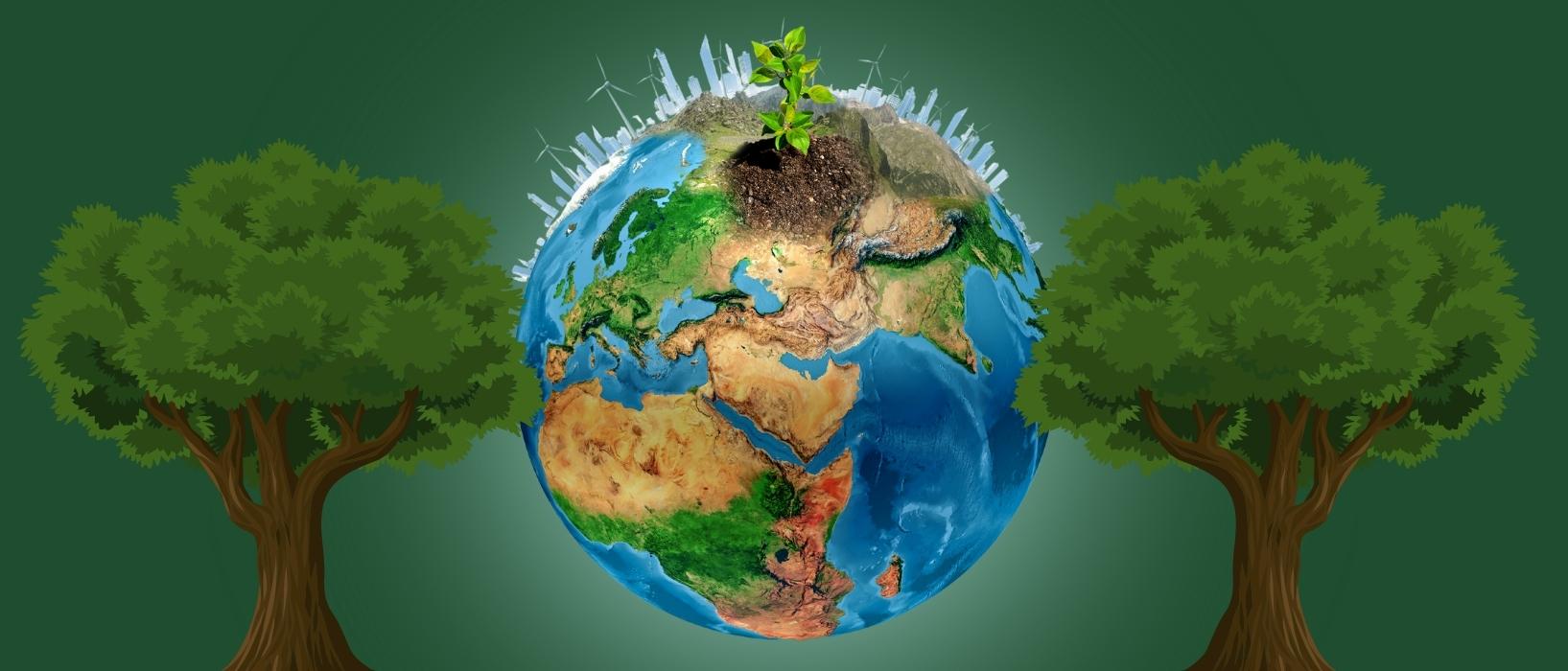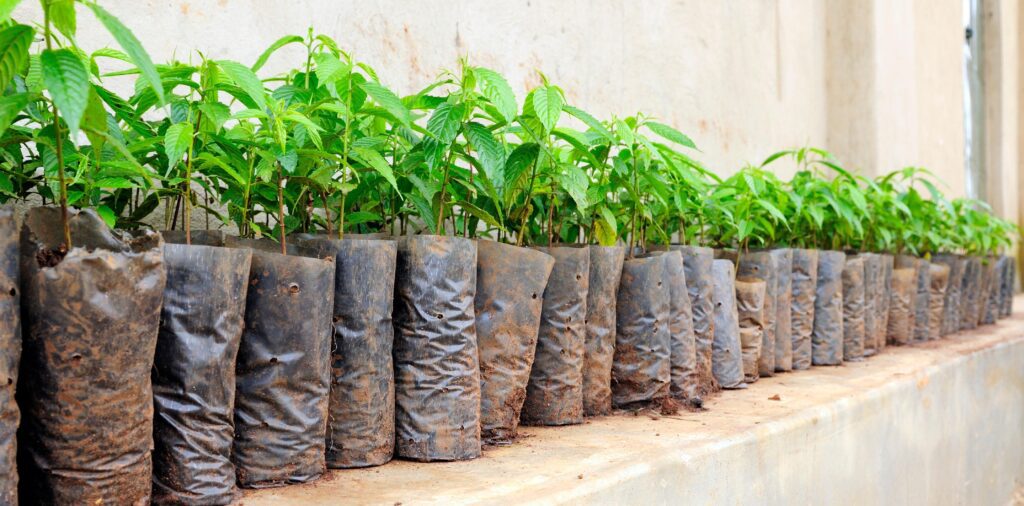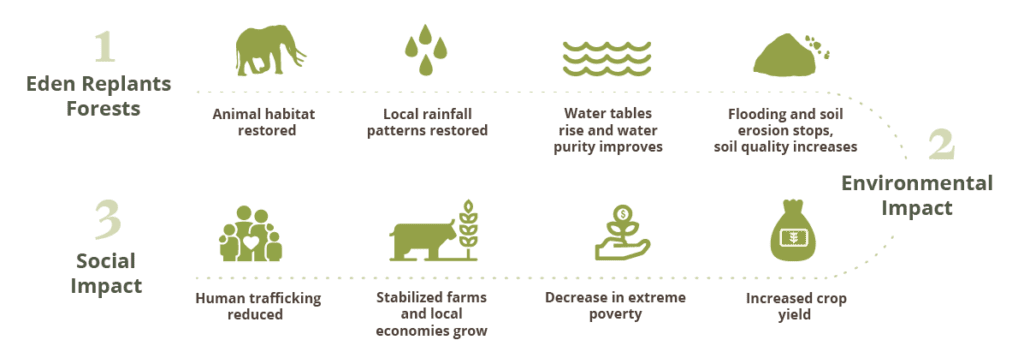
Greenhouse gas emissions are the leading cause of climate change but reforestation is increasingly talked about as the solution.
Just recently, a huge international pledge was made at COP26 to end and reverse deforestation worldwide by 2030.
Reforestation is also at the heart of what we do here at Play it Green, and is the first step in our three-step solution to a more sustainable life or business.
But why does reforestation matter so much, and what are its limits as a solution for climate change?
Firstly, reforestation as a term specifically refers to the process of replanting trees in areas that have previously been disturbed.
Afforestation, on the other hand, is the process of foresting an area of land which previously had no tree cover.
There are many reasons that forested areas can be cleared. Natural disasters, for example, such as wildfires, drought, or insect and disease infestations.
It can also come from human disturbances like logging, mining, agricultural clearing, or urban development.
Agriculture, however, is by far the largest global driver of this, with farmers cutting down forests to provide more room for planting crops or grazing livestock.
Many small farmers even clear smaller patches of land by cutting down the trees and burning them, a process known as ‘slash and burn’ agriculture.
Despite often being out of financial necessity or lack of access to better methods, this adds to the problem, with wildfires and overgrazing then preventing the growth of new trees.
The issue with cutting down forests around the world is that they play an essential role in the regulation of our climate.
This is because, as they grow, they absorb and store carbon dioxide from the atmosphere in their leaves, trunks, and roots. In turn, this helps cool the air and reduces the impact of global warming and climate change.
They can even help prevent floods and landslides by absorbing the water and slowly releasing it into the air.
While reforestation can help the environment, cutting down trees directly contributes to global warming.
The reason for this is that the trees release carbon dioxide when they are cut down and as they rot or burn. In fact, it accounts for 8% of all annual carbon emissions worldwide.
Consequently, the simplest way to decrease carbon emissions and reduce the impact of climate change would be reforestation.

Beyond their climate impact, forests provide a habitat for over 80% of the world’s land animals and help to protect some of the most endangered species on the planet.
The destruction of these habitats has had an enormous impact on Earth’s biodiversity, with many animals being forced from their homes.
They then try to look for a new location to reside, often disturbing other animals or being pushed into human settlements where they can’t survive.
This particular effect of deforestation may even be permanent, given the length it would take to grow an entire forest and establish a thriving ecosystem there.
Reforestation can also pose some other problems, with many tree planting companies existing solely for the purpose of ‘greenwashing’ with no benefit to the local communities or the environment.
For example, many companies will plant tree monocultures (i.e. one species of tree over and over) which can increase the risk of insect or microbial infections as well as forest fires.
It also doesn’t establish an ecosystem, making it difficult for animals to reside there.
Planting more sustainably involves assessing the condition of the land, knowing which local species will work best, having the infrastructure to support seedling production in nurseries, and developing a solid pre, during, and post-planting plan.
In areas where deforestation occurs, there is often an unsustainable relationship between the land and the people, with communities living in extreme poverty forced to cut trees down to make money from agriculture.
True sustainable tree planting works alongside local villages and communities to not only benefit them but to achieve successful and longstanding reforestation efforts.
Play it Green’s tree planting partner is the Eden Reforestation Project, who put local people at the heart of their environmental efforts.
Their ‘Employ to Plant’ methodology benefits communities through steady employment, allowing people living in extreme poverty to afford daily necessities such as food, shelter, clothing, and medicine.

Despite all the benefits that sustainable reforestation can offer, alone it is not enough to solve the climate crisis.
A large part of this is just impracticality. The Intergovernmental Panel on Climate Change has stated that if the world wanted to limit global warming to 1.5°C by 2050, an extra 1 billion hectares of trees would be needed.
This would take an enormous amount of time, money, and resources. There is also the time it takes to grow these trees, meanwhile greenhouse gas emissions and fossil fuel use only continue to increase.
Reforestation as a method also causes a great deal of scientific concern relating to biodiversity, as it is largely unknown whether ecosystems will be able to bounce back and function as efficiently as before.
None of this is to say, however, that both afforestation and reforestation methods are not massively important.
Trees help to protect our planet from the effects of climate change, can help land heal and provide for impoverished communities. They provide a home for many of the creatures on Earth.
Given that many climate solutions rely on technology not yet created, tree planting is a readily available method. It’s also very cheap and literally everyone, no matter where they are, can get involved.
When we couple tree planting with other methods to reduce our carbon footprints, we can make a real difference in the world.
This is why here at Play it Green we believe strongly in not only planting trees, but also the power of education, engaging others, and taking small simple steps that let you lead a more sustainable life.